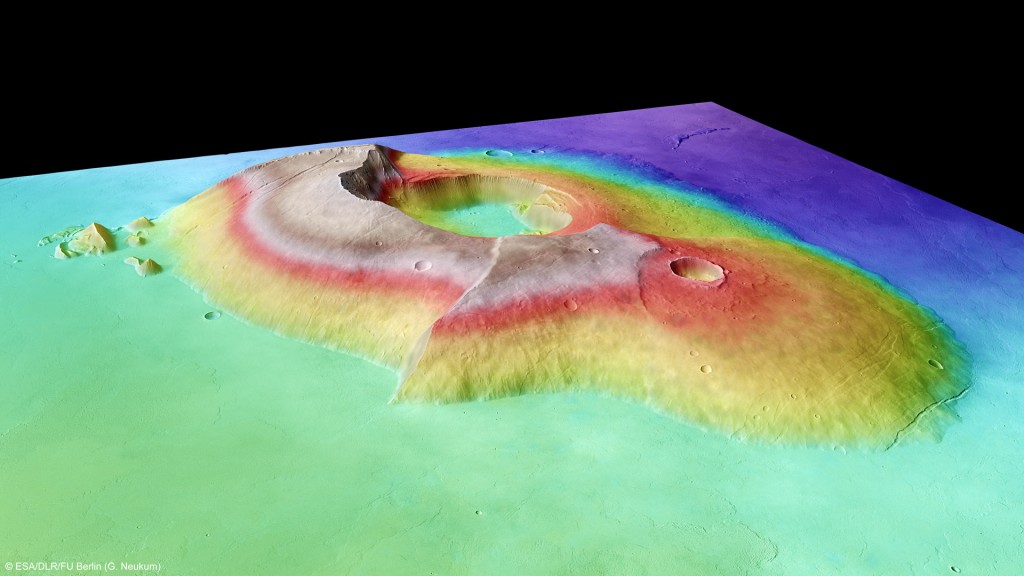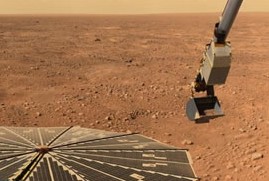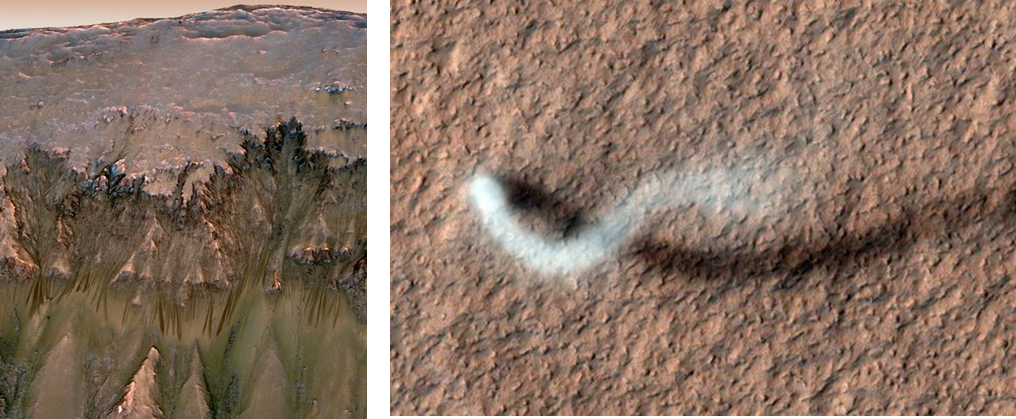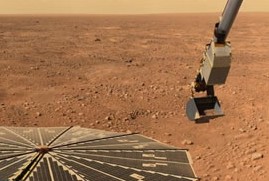By the end of 2012 Mars will have many human-built robots on its surface, in orbit around it, some artifacts and some operational.
In our last blog we talked about the compelling question we are trying to get the answers to in visiting Mars. What is our ultimate goal? Is it creating a human colony on the planet? Is it exploitation of potential Martian resources for use by humans on Earth? Or is it the science and the potential of discovering life elsewhere in the Universe that is driving our interest?
In 2003 Europe joined the United States with its first successful orbiter. Meanwhile Spirit and Opportunity were joined by a third lander in 2008, a lander with a robotic arm that was designed to find subsurface ice and test the chemical properties of its discovery.
So let’s continue the story about the unwrapping of the mysteries of Mars beginning with a new space agency player joining the search for life on Mars.
Mars Express
The European Space Agency (ESA) built its own multi-robot mission to Mars and launched it in June 2003. The spacecraft, an orbiter named Mars Express, included an additional small lander, Beagle-2, named after the ship upon which Charles Darwin made his epic voyage of discovery. The orbiter included a high resolution stereo camera plus a wide range of scientific instruments for mapping and studying surface and atmospheric composition.
Beagle-2 unfortunately failed in its landing attempt but Mars Express has been a great success working well beyond its one Martain year mission goal. It continues to provide images and telemetry to this day contributing to our further understanding of the geography and geochemistry of the planet.

Phoenix
The Phoenix Mars Lander was designed to study the circumpolar region of Mars. Why?
In 2002 instruments on the Mars Odyssey orbiter had discovered large quantities ice under the surface soils in the northern hemisphere of Mars. Phoenix was designed to “follow the water.” Its job was to sample subsurface ice and report on soil chemistry in the presence of ice.. Equipped with a robotic arm tipped with a shovel (see image below), and an on board set of experiments designed to do chemical analysis, Phoenix would give us a better picture of the potential for existing life on the planet.
Phoenix also had on board equipment to provide us with daily Martian weather reports for the northern arctic plain. Launched in August 2007, Phoenix touched down in May 2008. The lander mission in this harsh environment was scheduled to last ninety days. It exceeded this by almost two months before the photovoltaics (see the solar panel in the image below) could no longer gather sufficient sunlight as the northern hemisphere moved into winter.

The findings of the Phoenix mission indicated the presence of liquid water with deposits of calcium carbonate left behind when the water evaporated. Deposits were attributed to precipitation in the form of snow mixing with atmospheric carbon dioxide.
The soil chemistry included perchlorate, a big surprise discovery. Perchlorate on Earth is an oxidizing chemical that strongly attracts water and provides a food source for some Earth microbes. Could the perchlorate discovery by Phoenix indicate the presence of life currently on Mars?
Finally Phoenix observed something no scientists ever suspected – Martian snowfalls leading to a build up of water ice on the surface during Martian winters in the northern arctic plain.
The Phoenix findings once more reignited the life on Mars debate pointing to a strong likelihood that if it does not exist in the present, conditions for microbes to survive certainly have existed in the recent past.
Mars Reconnaissance Orbiter
Where there is water on Earth there is life. With this in mind much of our efforts to-date in exploring Mars have continued to focus on finding water. Once such mission is the Mars Reconnaissance Orbiter, launched it 2005 and designed specifically to study Mars from this perspective.
This orbiter is the first to be completely designed to alter its configuration through phases of flight, to optimize fuel use and take advantage of aerobraking for orbital insertion manouevers. Slimmed down to weigh 2,180 kilograms (4,806 pounds) on blast off, of which more than half represented propellant for course corrections during the long voyage to Mars, the Mars Reconnaissance Orbiter arrived at the planet in 2006.
The orbiter is designed like a badminton birdie with the spacecraft using its large solar arrays as wings during aerobraking to slow it and reduce the size of each of its orbits. Components have been designed to withstand the heat generated by each aerobraking manoeuvre in and out of Mars’ upper atmosphere. Taking six months before settling into a final orbital trajectory, Mars Reconnaissance Orbiter has been in operation around Mars from 2006 to today.
During its long flight to Mars, the Mars Reconnaissance Orbiter has tested new technologies for Deep Space communication using much less power. A new navigation camera has improved the precision of interplanetary flight manouevering.
The orbiter has also deployed six different scientific instruments and two on-board scientific facilities for conducting experiments. These experiments have mapped the gravity field of Mars and during aerobraking studied the structure of the Martian atmosphere.
Since its arrival three different cameras have been providing high-resolution images of the surface geography and weather on Mars. A sounding radar produces subsurface images to detect water ice to a depth greater than one meter (39 inches). A spectrometer identifies surface minerals. A radiometer measures atmospheric temperature, levels of dust and the presence of water vapour. The mission of the orbiter originally planned for one Martian year continues to this day amassing more data than all previous Martian missions.
What has Mars Reconnaissance Orbiter discovered?
Mars has extensive subsurface ice deposits that are subject to seasonal melting. As the orbiter has repeatedly passed over the same landscapes it has tracked these warm-season feature changes that strongly suggest evidence of salty liquid water flowing down gullies on the escarpment edges of craters.

Based on these continued findings the next Martian mission, the Mars Science Laboratory rover, named Curiosity, will study one particular area of Mars to follow the water in pursuit of finding life. Curiosity is scheduled to land on the planet on August 6, 2012. We’ll look at its mission in a future blog.
















